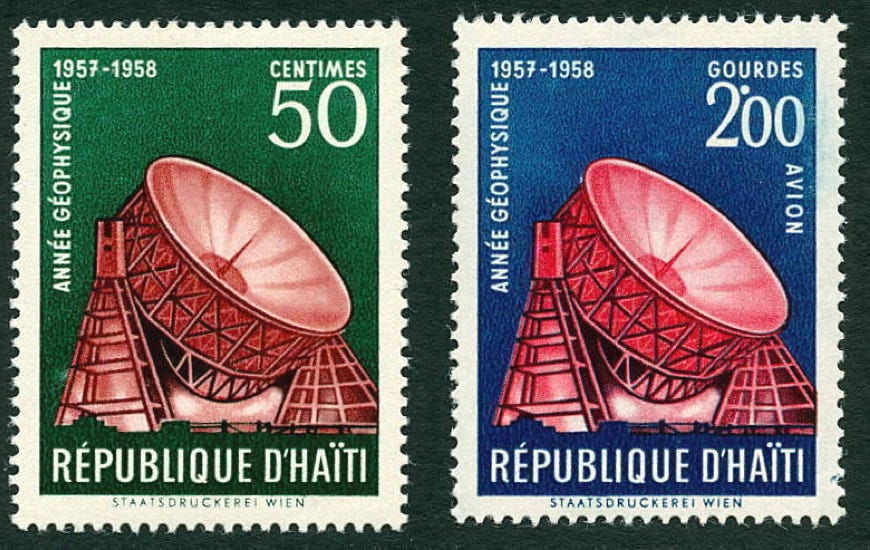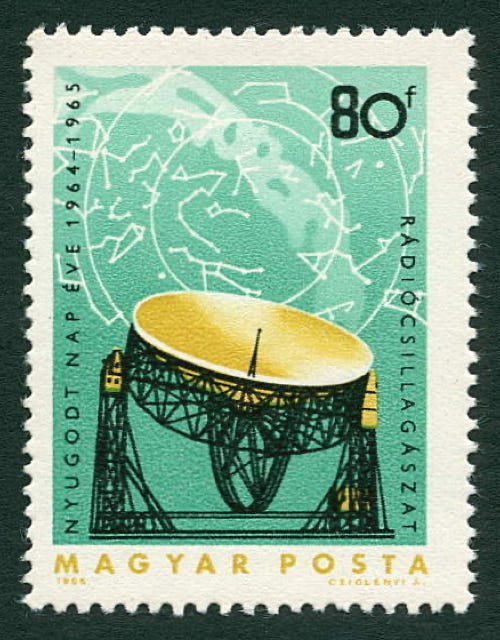Jodrell Bank radio telescope
The 250-ft (76-m) dish at Jodrell Bank, Cheshire, was for many years the world’s largest fully steerable radio telescope. When opened in 1957 it became an internationally recognized symbol of modern astronomy. It was the subject of Great Britain’s first astro stamp, in 1966, and I have found it on stamps from eight other countries, as pictured below in chronological order. Known since 1987 as the Lovell Telescope, the big dish has been upgraded and refurbished over the years, ensuring its continued successful operation. It is now the base station of a nationwide network of radio telescopes called e-MERLIN.
Haiti, 1958

Although crudely drawn, it is clear that this radio telescope is modelled on Jodrell Bank. It featured as part of an International Geophysical Year commemorative set released by Haiti in 1958 and is the earliest representation of the big dish on stamps.
Stanley Gibbons nos. 581, 585
Hungary, 1965

The unmistakable structure of the Jodrell Bank dish appeared on this stamp from a Hungarian set issued in 1965 to mark the International Years of the Quiet Sun (IQSY), a follow-up to the International Geophysical Year. Whereas the IGY occurred at a time of high solar activity, the IQSY was timed to coincide with solar minimum, in 1964–65. Above the radio telescope is a rather crude chart of the northern polar sky.
Stanley Gibbons no. 2059
Sharjah, 1965

Jodrell Bank featured on an unusual triangular stamp from Sharjah in the United Arab Emirates, part of a set of 20 on the theme of science, transport and telecommunications. It was joined to another stamp labelled ‘Early Astronomers’, which shows Johannes Hevelius and Ismaël Boulliau observing the 1661 eclipse of the Sun by projection, as illustrated in Hevelius’s book Machina Coelestis of 1673; also illustrated is a sketch of the Moon by Hevelius from his Selenographia of 1647.
Stanley Gibbons no. 118
Ascension Island, 1971

Ascension, an island in the South Atlantic, included the Jodrell Bank dish in a set depicting the evolution of space travel, although this illustration seems to confuse its role in radio astronomy with that of satellite tracking and communications. The wording on this stamp calls it the ‘world’s largest radio telescope’, which by then was not strictly true. In 1963 it had been overtaken by the much larger, but unsteerable, 305-m dish at Arecibo, Puerto Rico, although it did remain the largest fully steerable radio telescope until 1972 when its title was taken by the 100-m dish at Effelsberg, Germany.
Stanley Gibbons no. 143